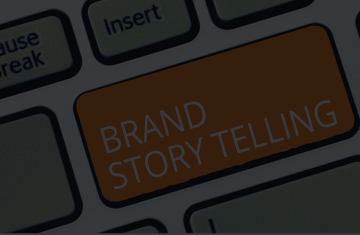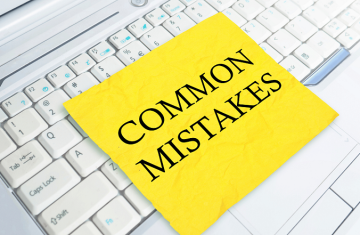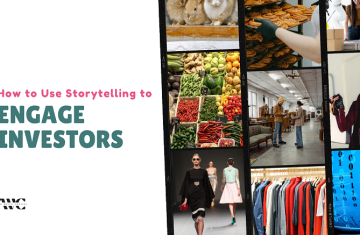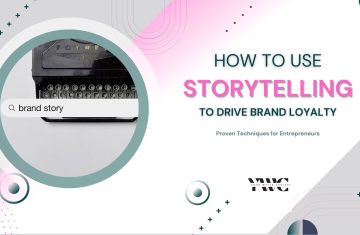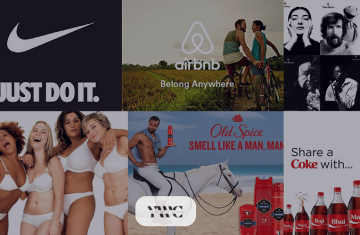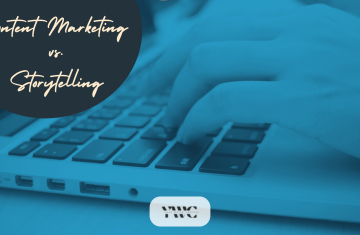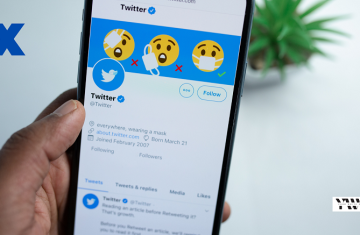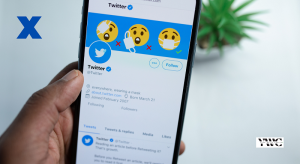We’ve all heard the saying, “Facts tell, but stories sell.” It’s not just a catchy phrase—it’s backed by science. Research from Stanford professor Jennifer Aaker shows that stories are up to 22 times more memorable than plain facts. That’s some serious staying power, making storytelling a powerful tool for any marketer.
Stories connect with our emotions, resonate with our values, and stick with us, making them way more effective at influencing decisions and behavior.
Now, here’s how we can actually measure the impact of storytelling in marketing.
Measuring the Impact of Storytelling in Marketing: Beyond Vanity Metrics
While the power of storytelling is undeniable, measuring its impact and return on investment (ROI) can be a tricky endeavor. Traditional marketing metrics like impressions, clicks, and even conversions often fall short when it comes to capturing the nuances of storytelling’s influence. These metrics might tell you how many people saw your ad or clicked on your link, but they don’t reveal the depth of engagement or the long-term impact on brand perception.
To truly understand the impact of your marketing stories, you need to adopt a holistic approach that combines quantitative and qualitative data. This means not only tracking the numbers but also understanding the “why” behind them.
Quantitative Metrics vs. Qualitative Data
Quantitative metrics like website traffic, social media engagement, and conversion rates provide valuable insights into the immediate impact of your stories. They can tell you how many people are interacting with your content, how they’re sharing it, and whether it’s leading to desired actions. However, to gauge the long-term impact on brand perception, you need to go deeper.
This is where qualitative data comes in. Surveys, focus groups, and social listening can reveal how your stories are resonating with your audience on an emotional level. Are they sparking conversations? Are they changing perceptions? Are they inspiring brand loyalty? By gathering this qualitative data, you can gain a richer understanding of the subtle ways in which your stories are influencing your audience.
Incorporating a mix of quantitative and qualitative metrics allows you to paint a comprehensive picture of your storytelling’s impact. By understanding not only the “what” but also the “why,” you can refine your narrative strategies, optimize your campaigns, and ultimately achieve a higher ROI.
Quantitative Metrics: Tracking the Numbers
Engagement Metrics:
1. Time on Page/Video Watch Time
How long are people lingering on your blog posts or videos? If they’re captivated, they’ll stick around longer. A study by Chartbeat found that users who read an article for at least 30 seconds are 2.5 times more likely to return to that site.
2. Social Shares/Comments
Is your story sparking conversations? According to a Nielsen study, 92% of consumers trust recommendations from friends and family more than any other form of advertising. Social shares and comments are a testament to that trust and can exponentially increase your story’s reach.
3. Click-through Rates (CTR)
Is your story compelling enough to make people click on a call-to-action? A high CTR indicates that your narrative is resonating and prompting action. HubSpot data shows that personalized CTAs perform 202% better than basic CTAs, so tailor your story to your audience’s needs.
Conversion Metrics:
1. Lead Generation
Are your stories attracting potential customers? Track how many leads you’re generating from your storytelling campaigns. A study by Annuitas Group found that nurtured leads make 47% larger purchases than non-nurtured leads, proving the long-term value of storytelling.
2. Sales
Are your stories directly influencing purchases? While it can be challenging to attribute sales directly to storytelling, you can use tracking links and promo codes to get a better understanding of the impact.
3. Customer Lifetime Value (CLTV)
Are your stories fostering long-term loyalty? Track the CLTV of customers who engage with your stories. A study by Motista found that emotionally connected customers have a 306% higher lifetime value than those who are just satisfied.
Brand Awareness
Social Mentions
Are people talking about your brand organically? Track mentions of your brand name, campaign hashtags, or specific story elements. According to Brandwatch, 96% of conversations about brands happen outside of official brand channels, showcasing the importance of monitoring social mentions.
Website Traffic
Are your stories driving people to your website? Use web analytics to track referral traffic from your storytelling campaigns. A study by Conductor found that organic search traffic is 5.66 times more valuable than paid search traffic, highlighting the importance of creating content that ranks well.
Brand Lift Studies
Are your stories improving brand perception? These studies measure changes in brand awareness, consideration, and preference before and after a campaign. Google’s Brand Lift surveys have shown that video storytelling campaigns can increase brand awareness by up to 50%.
Unveiling the Hidden Metrics
Beyond these standard metrics, consider tracking less obvious but equally valuable indicators:
- Sentiment Analysis: How are people feeling about your brand after engaging with your story? Positive sentiment can lead to increased brand loyalty and advocacy.
- Employee Engagement: Are your employees sharing and engaging with your brand stories? A study by Smarp found that employees who are engaged with their company’s content are 27% more likely to feel optimistic about the company’s future.
- Qualitative Feedback: Don’t underestimate the power of anecdotal feedback. Conduct surveys, interviews, or focus groups to gather qualitative data on how your stories resonate with your audience.
Qualitative Metrics: Understanding the Why
Customer Feedback
Surveys
Don’t just ask if customers liked your story. Ask why. Did it resonate with them personally? Did it change their perception of your brand? Did it inspire them to take action? A well-crafted survey can yield a treasure trove of insights.
Social Listening
The online world is abuzz with conversations about your brand. Monitor social media, forums, and review sites to hear what people are saying about your stories. Are they sharing them? Are they discussing them with friends? Are they creating their own narratives around your brand? These organic conversations provide invaluable clues about the emotional impact of your storytelling.
Focus Groups
Gather a small group of your target audience and engage in a guided conversation about your stories. Observe their reactions, listen to their interpretations, and probe deeper into their thoughts and feelings. This qualitative research method can reveal hidden motivations, uncover unexpected insights, and provide a deeper understanding of how your stories resonate with different segments of your audience.
Brand Sentiment Analysis
Emotions are the currency of storytelling. Brand sentiment analysis helps you gauge the emotional temperature of your audience towards your brand. It’s not just about whether people are saying positive or negative things; it’s about understanding the underlying emotions behind those words.
- Analyzing Online Reviews: Dive into the language used in online reviews and social media comments. Are people expressing excitement, trust, or skepticism? Look beyond the star ratings and focus on the words, phrases, and tone used to describe your brand and your stories.
- Tracking Changes Over Time: Brand sentiment is not static; it fluctuates based on a variety of factors, including your marketing efforts. Track changes in sentiment over time to see how your storytelling is impacting the emotional connection your audience feels towards your brand.
Net Promoter Score (NPS)
The Net Promoter Score (NPS) is a simple yet powerful metric that measures customer loyalty and their willingness to recommend your brand to others. While not directly related to storytelling, a high NPS can be an indicator that your stories are resonating and fostering a strong sense of brand affinity.
Combining Quantitative and Qualitative Data
Here’s where the true power of measurement lies. Combining quantitative and qualitative data gives you a 360-degree view of your storytelling’s impact. For example, a high click-through rate on a story-driven email campaign is great, but it doesn’t tell you why people clicked. Was it the subject line? The visuals? The emotional hook? By digging into qualitative feedback, you can uncover the specific elements that drove engagement.
- Identifying Patterns and Trends: When you analyze both quantitative and qualitative data together, patterns and trends start to emerge. You might discover that certain types of stories resonate more with specific audience segments, or that certain emotional triggers are more effective at driving action. These insights can be used to refine your storytelling strategy and create even more impactful campaigns.
- Optimizing Your Storytelling Strategy: Measurement is not just about evaluating past performance; it’s about using data to inform future decisions. By analyzing what works and what doesn’t, you can continually optimize your storytelling, tailoring your narratives to specific audience segments and maximizing the emotional impact of your campaigns.
You May Also Like:
- How to Use Storytelling in Marketing to Close Sales
- Top 10 Brands that Have Mastered the Art of Storytelling in Marketing
Conclusion
Don’t overlook the power of storytelling when it comes to building brand loyalty and advocacy. While these effects might not show up in the numbers right away, they have a lasting impact on your bottom line. Stories create emotional connections that go beyond just transactions, turning customers into passionate brand advocates who spread the word and bring in new business.
By using both quantitative and qualitative metrics, you’ll get a clearer picture of your audience, what drives them, and how your stories are shaping their views. This insight is crucial when measuring the impact of storytelling in marketing.
PS: Want to start attracting your desired leads through storytelling that connects and converts? Here’s my free storytelling workbook to get you started.
Need professional help creating relatable marketing stories that drive sales? I’m “your write choice.” Contact me now!


